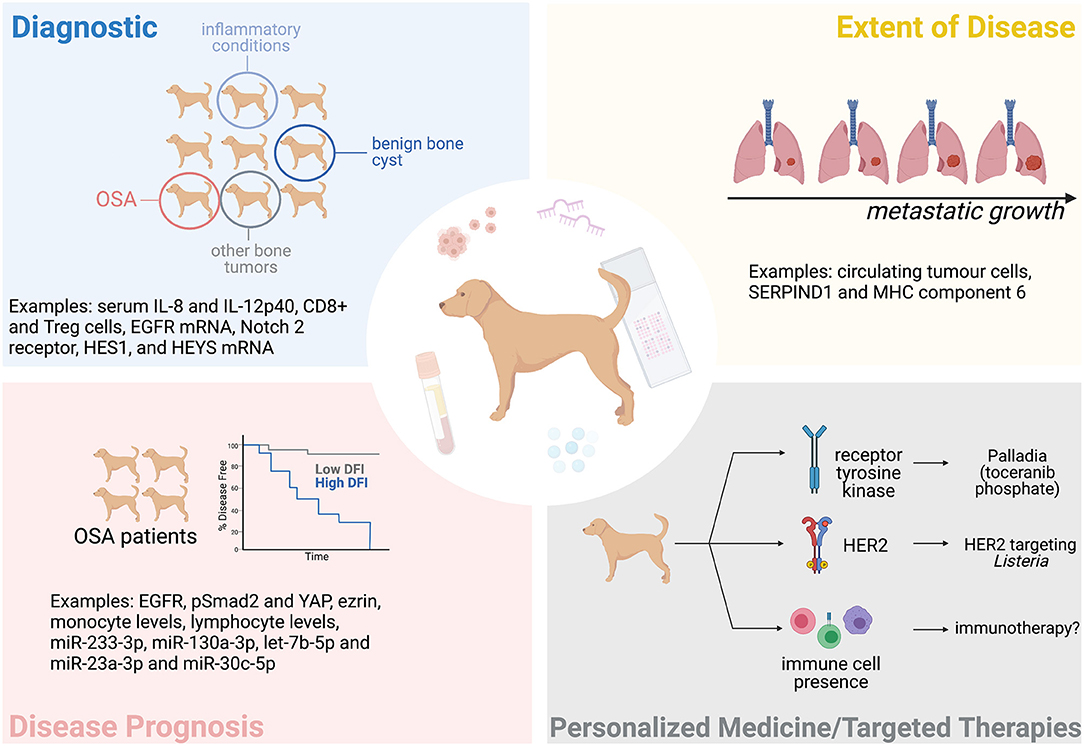Mesenchymal neoplasia in dogs leg pain
Mesenchymal Neoplasia In Dogs Leg Pain. Pain was eventually localized in the upper cervical area 1 dog in the lower cervical area and axillary region 4 dogs in the lower back region 1 dog and in the distal limb 2 dogs. Few dogs survive longer than 6 months after diagnosis. Weakness in back legs. If the skin tumor is malignant the dog will also display some symptoms such as skin itchiness redness lack of appetite lethargy and flaky skin.
 Soft Tissue Sarcoma Animal Cancer And Imaging Center From veterinarycancer.com
Soft Tissue Sarcoma Animal Cancer And Imaging Center From veterinarycancer.com
This review summarizes the current knowledge of MSCs from dogs including in vitro characteristics in vivo cartilage regenerative potential and therapeutic effects for naturally developed OA in dogs. The Urinary tract Tumors of the reproductive and urinary tract are not uncommon. Most pose no threat to the dog. This disease first appears in the internal organs such as the liver lymph nodes and lungs and usually does not affect the skin. Round cell tumors which can be of several types including lymphosarcoma mast cell tumors histiocytomas plasma cell tumors. 21 Appendicular osteosarcoma is primarily a disease of large- and giant-breed dogs.
Older dogs and certain breeds.
Swelling which may be painful may also be seen at the site of the chondrosarcoma. These tumors may be located in all organs with a higher or lower incidence in some tissues as it will be shown. Metastatic neoplasia often called mets is a cancer that has spread to other parts of the body from its original site. Osteosarcoma is the most common primary bone tumor in dogs accounting for approximately 85 of tumors of the skeleton. At 56 days the dog continued to do well with no changes in treatment at home. Cells were obtained from.
 Source: researchgate.net
Source: researchgate.net
This review summarizes the current knowledge of MSCs from dogs including in vitro characteristics in vivo cartilage regenerative potential and therapeutic effects for naturally developed OA in dogs. In these dogs the first sign of disease is often limping on the affected leg. 21 Appendicular osteosarcoma is primarily a disease of large- and giant-breed dogs. X-rays can help rule out other conditions but diagnosis requires magnetic resonance imaging MRI or computed tomography CT. The Bones Bone neoplasms are common in large and giant breeds of dogs.
 Source: veterinarycancer.com
Source: veterinarycancer.com
Of allogeneic canine adipose tissue-derived mesenchymal stem cells in dogs with chronic spinal cord injury. Older dogs and certain breeds. The Bones Bone neoplasms are common in large and giant breeds of dogs. Occasionally the front legs are affected first. MSCs from dogs share.
 Source: msdvetmanual.com
Source: msdvetmanual.com
The Urinary tract Tumors of the reproductive and urinary tract are not uncommon. The clinical significance of these tumors is that they can masquerade as cranial cruciate ligament disease CCLD as illustrated by the following cases. Mesenchymal stem cells MSCs are promising therapeutic tools for treatment of cartilage damage and osteoarthritis OA. 2180 Increasing height and weight have been associated with increased risk of developing osteosarcoma. Melanomas which are pigmented tumors.
 Source: msdvetmanual.com
Source: msdvetmanual.com
Chondrosarcoma of the pelvis may lead to pain and weakness in the rear legs. Mesenchymal tumors appear on the skin and are the most common type of tumors in dogs. Mesenchymal stem cells MSCs are promising therapeutic tools for treatment of cartilage damage and osteoarthritis OA. A veterinarian may test a neoplasia to determine if it is malignant or cancerous. Metastatic neoplasia often called mets is a cancer that has spread to other parts of the body from its original site.
 Source: researchgate.net
Source: researchgate.net
Electromyography was performed in 4 dogs and showed denervation potentials of the muscles of the affected limb. Primary neoplasia involving a joint is uncommon in the dog but synovial sarcomas do occur most frequently in the stifle joint 123. Typically muscle wasting is severe within 2 weeks. Dogs with mild signs may improve with rest and medication but surgery is often necessary. These tumors may be located in all organs with a higher or lower incidence in some tissues as it will be shown.
 Source: cancerres.aacrjournals.org
Source: cancerres.aacrjournals.org
The tumors typically result in slow progressive unilateral thoracic limb lameness and muscle atrophy often involving the infraspinatus and supraspinatus muscles. Cells were obtained from. This disease first appears in the internal organs such as the liver lymph nodes and lungs and usually does not affect the skin. In dogs this type of problem is usually benign meaning that it is not a threat to health and does not spread. The neoplasia would have to be malignant for it to metastasize travel to other parts of the body.
 Source: vetgirlontherun.com
Source: vetgirlontherun.com
Primary neoplasia involving a joint is uncommon in the dog but synovial sarcomas do occur most frequently in the stifle joint 123. They are most often found on the limbs and trunk of the body but can also be found in the nasal cavity or mouth. Using biochemical histological and molecular testing. The disorder progresses rapidly causing illness pain and eventually death. The dog may also lose appetite and refuse to be touched.
 Source: cell.com
Source: cell.com
At 56 days the dog continued to do well with no changes in treatment at home. Older dogs and certain breeds. A veterinarian may test a neoplasia to determine if it is malignant or cancerous. Fibrosarcomas are a type of soft tissue sarcoma that is common in dogs. When a neoplasia is found on a dog mammary gland it is malignant or dog breast cancer 50 of the time.
 Source: researchgate.net
Source: researchgate.net
The Lungs Lung tumors are uncommon but possible in dogs. Cells were obtained from. Fibrosarcomas are a type of soft tissue sarcoma that is common in dogs. About a third of all tumors that occur in canines are mesenchymal. Mesenchymal tissue neoplasms are soft tissue tumors also known as connective tissue tumors which are relatively frequent in domestic animals and have a high incidence in some species.
 Source: redalyc.org
Source: redalyc.org
A veterinarian may test a neoplasia to determine if it is malignant or cancerous. Symptoms of urethral neoplasia vary from dog to dog in severity depending on the size of the tumor and how long it has been present. Most pose no threat to the dog. Melanomas which are pigmented tumors. Electromyography was performed in 4 dogs and showed denervation potentials of the muscles of the affected limb.
 Source: msdvetmanual.com
Source: msdvetmanual.com
The Lungs Lung tumors are uncommon but possible in dogs. They are most often found on the limbs and trunk of the body but can also be found in the nasal cavity or mouth. This disease first appears in the internal organs such as the liver lymph nodes and lungs and usually does not affect the skin. X-rays can help rule out other conditions but diagnosis requires magnetic resonance imaging MRI or computed tomography CT. About a third of all tumors that occur in canines are mesenchymal.
 Source: frontiersin.org
Source: frontiersin.org
A veterinarian may test a neoplasia to determine if it is malignant or cancerous. This disease first appears in the internal organs such as the liver lymph nodes and lungs and usually does not affect the skin. Most dogs 80 do well with surgery. Cells were obtained from. Few dogs survive longer than 6 months after diagnosis.
If you find this site adventageous, please support us by sharing this posts to your favorite social media accounts like Facebook, Instagram and so on or you can also save this blog page with the title mesenchymal neoplasia in dogs leg pain by using Ctrl + D for devices a laptop with a Windows operating system or Command + D for laptops with an Apple operating system. If you use a smartphone, you can also use the drawer menu of the browser you are using. Whether it’s a Windows, Mac, iOS or Android operating system, you will still be able to bookmark this website.






